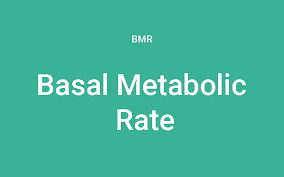In the pursuit of a healthy lifestyle, understanding your body’s unique composition is crucial. With the help of powerful tool waist to hip calculator (waist and hip ratio calculator), individuals can easily assess their body fat distribution and make informed decisions about their overall health and well-being. In this comprehensive guide, we’ll delve into the features and benefits of this calculator, highlighting their significance in evaluating health risks and guiding personalized fitness and nutrition plans. Embrace this essential calculator on your journey to improved health and a more fulfilling life.
Waist to Hip Ratio Calculator
[ez-toc]
What is an ideal waist to hip ratio?
The waist-to-hip ratio (WHR) has become an essential aspect of overall health and attractiveness for both men and women. But what is the ideal waist-to-hip ratio, and why is it important? In this comprehensive guide, we will explore the significance of WHR, the ideal values for men and women, and how you can achieve an optimal ratio for better health and aesthetics.
What is Waist-to-Hip Ratio?
The waist-to-hip ratio is a simple measurement that compares the circumference of your waist to the circumference of your hips. It is a useful tool for determining the distribution of body fat, which plays a crucial role in overall health. Research has shown that individuals with a higher concentration of fat around their abdomen are at a greater risk for various health problems, including heart disease, diabetes, and certain cancers.
Ideal Waist-to-Hip Ratio for Men and Women:
While there is no universally agreed-upon ideal waist-to-hip ratio, various studies have suggested specific ranges for both men and women. Generally, an ideal WHR for women is around 0.7, while for men, it’s closer to 0.9. These values are associated with better health outcomes and are also considered more attractive by societal standards.
However, it’s important to note that these are just general guidelines. Individual factors, such as genetics, ethnicity, and lifestyle, can also affect what may be considered ideal for each person.
Why is the Ideal Waist-to-Hip Ratio Important?
Health Benefits
Maintaining a healthy waist-to-hip ratio can help reduce the risk of various health problems. A lower WHR is associated with a reduced risk of heart disease, type 2 diabetes, high blood pressure, and other obesity-related issues.
Aesthetics
Societal norms and preferences have long suggested that a lower waist-to-hip ratio is considered more attractive. This preference is rooted in evolutionary psychology, where a lower WHR in women is associated with fertility and overall reproductive health, while a lower WHR in men signifies strength and virility.
How to Achieve an Ideal Waist-to-Hip Ratio
- Diet
One of the most effective ways to improve your waist-to-hip ratio is to maintain a balanced diet. Consuming whole foods, lean proteins, and plenty of fruits and vegetables can help regulate your weight and reduce fat accumulation around the waist.
- Exercise
Regular physical activity is essential for improving your WHR. Incorporate a mix of cardiovascular exercises and strength training into your routine, focusing on workouts that target the abdominal and lower back muscles to help tighten and tone the waist area.
- Lifestyle
Making healthier choices in your day-to-day life can have a significant impact on your waist-to-hip ratio. Reducing stress, getting enough sleep, and avoiding unhealthy habits such as smoking and excessive alcohol consumption can all contribute to a healthier WHR.
Achieving an ideal waist-to-hip ratio is not just about aesthetics – it’s a matter of overall health and well-being. By understanding the significance of the waist-to-hip ratio and adopting a healthy lifestyle, you can work towards achieving a better WHR that benefits both your appearance and long-term health.
Waist and hip ratio chart
Waist and hip ratio (WHR) charts provide an essential tool to assess an individual’s body fat distribution, which has significant implications for overall health. In this informative guide, we’ll dive into the world of waist and hip ratio charts, discussing their importance, how to use them, and the different types of charts available.
What is a Waist and Hip Ratio Chart?
A waist and hip ratio chart is a visual representation that helps individuals determine their WHR by comparing their waist circumference to their hip circumference. This ratio is crucial in understanding the distribution of body fat and assessing the risk of various health conditions, including heart disease, diabetes, and certain cancers.
Importance of Waist and Hip Ratio Charts:
Health Risk Assessment
WHR charts allow individuals to assess their risk for developing obesity-related health issues. By identifying whether your WHR falls within a healthy range, you can take proactive steps to make necessary lifestyle changes.
Body Shape Classification
Waist and hip ratio charts can help classify body shapes into different categories, such as apple or pear-shaped. This information can be useful in tailoring specific exercise routines and diet plans to target problem areas.
How to Use a Waist and Hip Ratio Chart:
Measure Your Waist and Hips
To use a waist and hip ratio chart, you need accurate measurements of your waist and hip circumferences. For your waist, measure around the smallest part of your torso, typically just above the belly button. For your hips, measure around the widest part of your buttocks.
Calculate Your Ratio
Divide your waist measurement by your hip measurement to calculate your WHR. For example, if your waist is 30 inches and your hips are 40 inches, your WHR would be 0.75 (30 ÷ 40 = 0.75).
Refer to the Chart
Using the calculated ratio, refer to the waist and hip ratio chart to determine whether your WHR falls within a healthy range. Charts typically differentiate between male and female categories, as the ideal WHR differs between sexes.

Different Types of Waist and Hip Ratio Charts:
- Gender-Specific Charts
Since the ideal WHR varies between men and women, gender-specific charts provide separate reference ranges for both sexes. These charts often categorize WHRs into healthy, moderate risk, and high risk, allowing individuals to assess their health status and take appropriate action.
- Age-Specific Charts
Age can also play a role in determining an ideal WHR. Age-specific charts factor in age-related changes in body fat distribution, providing a more accurate assessment of an individual’s WHR.
- Ethnicity-Based Charts
Ethnicity-based WHR charts consider genetic factors and cultural differences that can impact body fat distribution. These charts can offer a more personalized assessment of an individual’s WHR and health risks.
Waist and hip ratio charts are invaluable tools for assessing an individual’s body fat distribution and potential health risks. By understanding how to use these charts effectively, you can take charge of your health and make informed decisions about diet, exercise, and lifestyle changes to achieve a healthier WHR. Don’t overlook the importance of monitoring your waist and hip ratio – it’s a crucial step in maintaining a healthy lifestyle and reducing the risk of obesity-related health issues.
Waist and hip ratio formula
The waist-to-hip ratio formula is a calculation that compares an individual’s waist circumference to their hip circumference. By determining this ratio, you can assess your body fat distribution and gain insight into your potential health risks.
The WHR Formula:
WHR = Waist Circumference ÷ Hip Circumference
To calculate your WHR, simply measure your waist and hip circumferences and divide the waist measurement by the hip measurement.
Importance of the Waist-to-Hip Ratio Formula:
- Health Risk Assessment
The waist-to-hip ratio formula is an essential tool for assessing health risks associated with obesity. A higher WHR indicates a greater concentration of fat around the abdomen, which is linked to an increased risk of heart disease, diabetes, and certain cancers.
- Body Shape Classification
The WHR formula can help classify body shapes, such as apple or pear-shaped. Understanding your body shape can be useful in tailoring specific exercise routines and diet plans to target problem areas and achieve better overall health.
How to Use the Waist-to-Hip Ratio Formula:
- Accurate Measurements
To use the waist-to-hip ratio formula effectively, you need accurate measurements of your waist and hip circumferences. Measure your waist at the smallest part of your torso, typically just above the belly button. Measure your hips at the widest part of your buttocks.
- Calculate Your Ratio
Divide your waist measurement by your hip measurement to calculate your WHR. For example, if your waist is 32 inches and your hips are 40 inches, your WHR would be 0.8 (32 ÷ 40 = 0.8).
- Assess Your Health Risks
Once you’ve calculated your WHR, use the following general guidelines to assess your health risks:
- For women, a WHR of 0.80 or lower is considered low risk, 0.81 to 0.85 is moderate risk, and 0.86 or higher is high risk.
- For men, a WHR of 0.95 or lower is considered low risk, 0.96 to 1.0 is moderate risk, and 1.0 or higher is high risk.
Keep in mind that these are general guidelines, and individual factors such as genetics, ethnicity, and lifestyle can affect what is considered an ideal WHR for each person.
What are the advantages of using Waist-to-hip ratio?
The waist-to-hip ratio (WHR) has emerged as an essential health indicator for assessing body fat distribution and associated health risks. In this insightful article, we’ll explore the various advantages of using the waist-to-hip ratio, from its simplicity and affordability to its ability to predict health outcomes and guide lifestyle choices.
Advantages of Using Waist-to-Hip Ratio:
- Simplicity and Affordability
One of the primary benefits of the waist-to-hip ratio is its simplicity. All you need to determine your WHR is a measuring tape, making it an affordable and accessible method for individuals to assess their body fat distribution without the need for expensive equipment or specialized tests.
- Health Risk Assessment
The waist-to-hip ratio is an effective tool for assessing the risk of obesity-related health issues. A higher WHR indicates a greater concentration of fat around the abdomen, which is associated with an increased risk of heart disease, diabetes, and certain cancers. By determining your WHR, you can identify potential health risks and take proactive steps to address them.
- Body Shape Classification
The WHR can help classify body shapes, such as apple or pear-shaped. This information is valuable for tailoring specific exercise routines and diet plans to target problem areas and achieve better overall health.
- Predictive Value for Health Outcomes
Numerous studies have demonstrated the predictive value of the waist-to-hip ratio for various health outcomes. A higher WHR has been linked to an increased risk of cardiovascular events, metabolic syndrome, and all-cause mortality. This knowledge can empower individuals to make informed decisions about their health and lifestyle choices.
- Better Indicator than BMI
While the body mass index (BMI) has traditionally been used to assess an individual’s weight status, it fails to consider body fat distribution. The waist-to-hip ratio offers a more accurate assessment of an individual’s health risks by accounting for the distribution of body fat, making it a superior indicator in many cases.
- Motivation for Lifestyle Changes
The waist-to-hip ratio can serve as a powerful motivator for individuals to adopt healthier lifestyles. By understanding the implications of their WHR, individuals can take charge of their health and make informed decisions about diet, exercise, and stress management to achieve a healthier WHR and improve overall well-being.
- Applicable to Both Genders
The waist-to-hip ratio is a valuable health indicator for both men and women. Although the ideal WHR may differ between the sexes, the method for calculating and assessing health risks remains the same, making it a versatile tool for evaluating health across genders.
The advantages of using the waist-to-hip ratio are numerous, from its affordability and simplicity to its ability to predict health outcomes and guide lifestyle choices. By incorporating the waist-to-hip ratio into your health assessment toolkit, you can gain invaluable insights into your body fat distribution, identify potential health risks, and take charge of your well-being. Embrace the power of the waist-to-hip ratio and embark on a journey towards better health and a more fulfilling life.
Waist to Hip Calculator ( Waist and Hip Ratio Calculator )
In the world of health assessment, waist and hip ratio calculator have become essential tool for understanding body fat distribution and its implications on overall health. In this comprehensive guide, we’ll explore it, benefits, and how they can help you make informed decisions about your health and well-being.
Waist to Hip Calculator: A Key Tool for Health Assessment
A waist to hip calculator is a digital tool designed to help individuals determine their waist-to-hip ratio (WHR) by simply inputting their waist and hip measurements. By calculating this ratio, you can assess your body fat distribution and gain insight into your potential health risks.
Benefits of Using a Waist to Hip Ratio Calculator:
User-friendly interface: Waist to hip Ratio calculator often features an easy-to-use interface that allows individuals to quickly and accurately calculate their WHR.
Instant results: A waist to hip calculator provides immediate results, enabling users to assess their health risks and take prompt action if necessary.
Accessible online: Many waist to hip calculators are available online, making it easy for individuals to access and use them anytime, anywhere.
Advantages of Using a Waist and Hip Ratio Calculator:
Detailed health risk assessment: Waist and hip ratio calculator often includes information on health risk categories, allowing users to better understand the implications of their WHR.
Body shape classification: Some waist and hip ratio calculator also provides body shape classification, helping individuals tailor specific exercise routines and diet plans to target problem areas.
Customizable inputs: Waist and hip ratio calculator may allow users to input measurements in different units, such as inches or centimeters, catering to a broader audience.
Frequently Asked Questions (FAQ) on Waist-to-Hip Ratio (WHR)
1. What is Waist-to-Hip Ratio (WHR)?
Waist-to-Hip Ratio (WHR) is a numerical value that represents the proportion of your waist circumference to your hip circumference. It is used as an indicator of body fat distribution and health risks.
2. Why is WHR important for health assessment?
WHR is crucial because it provides insights into the distribution of body fat, particularly around the abdomen and hips. This distribution can be a significant predictor of various health conditions, including cardiovascular disease and diabetes.
3. What’s the significance of a low WHR?
A low WHR suggests that your waist is narrower than your hips, indicating a healthier body fat distribution. This is associated with a reduced risk of certain health issues.
4. Is a high WHR always a cause for concern?
A high WHR, where the waist is wider than the hips, can indicate an increased risk of health problems, particularly cardiovascular disease and diabetes. However, it’s important to consider other health factors and consult with a healthcare professional for a comprehensive assessment.
5. What is a Waist-to-Hip Calculator?
A Waist-to-Hip Calculator is a tool that helps you determine your WHR by inputting your waist and hip measurements. It simplifies the calculation process.
6. How do I use a Waist-to-Hip Calculator/Waist-to-Hip Ratio Calculator?
Using a Waist-to-Hip Calculator is straightforward. Enter your waist and hip measurements in the provided fields, and the calculator will compute your WHR.
7. Where can I find a reliable Waist-to-Hip Calculator online?
You can find Waist-to-Hip Calculators on various health and fitness websites. Make sure to use a trusted source for accurate results.
8. Can I use a Waist-to-Hip Ratio Calculator for children and adolescents?
While WHR can be used for individuals of all ages, specific guidelines and interpretation may differ for children and adolescents. Consult pediatric growth charts and healthcare professionals for accurate assessments in younger populations.
9. How often should I calculate my WHR?
The frequency of WHR calculations can vary from person to person. You may choose to calculate it periodically, such as during regular health check-ups or when making significant lifestyle changes.
10. Are there limitations to using WHR and these calculators?
WHR is a valuable indicator, but it should be considered alongside other health measures for a comprehensive assessment. These calculators can provide helpful information, but they do not account for factors like muscle mass, bone density, or individual health conditions.
11. How can I improve my WHR if it’s in a higher-risk range?
Improving your WHR often involves adopting a healthier lifestyle, including regular exercise, balanced nutrition, and stress management. Consult with healthcare professionals or registered dietitians for personalized guidance and strategies.
Conclusion:
Waist to hip calculator or waist and hip ratio calculator is a valuable tool for assessing body fat distribution and understanding its impact on overall health. By utilizing it, you can easily determine your WHR, identify potential health risks, and take appropriate steps to improve your well-being. Embrace the power of these digital tools and embark on a journey towards better health and a more fulfilling life.





